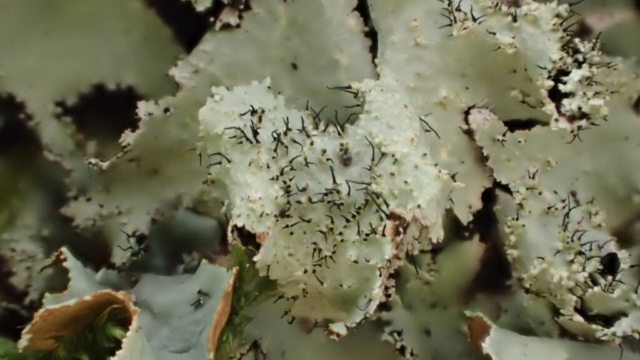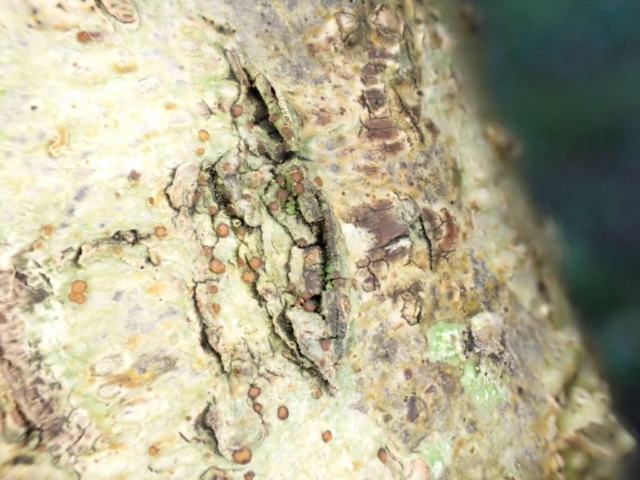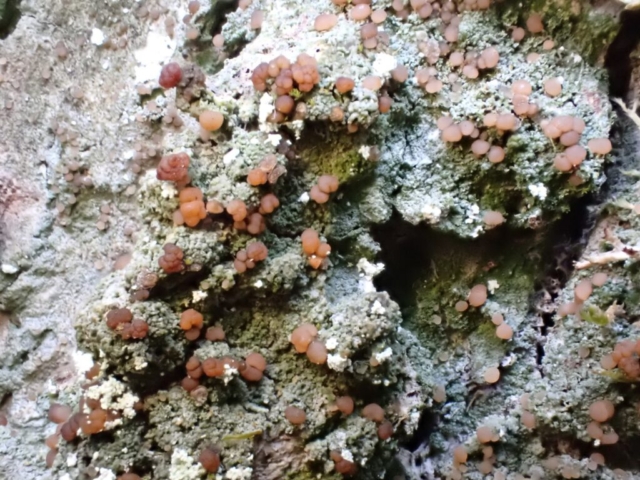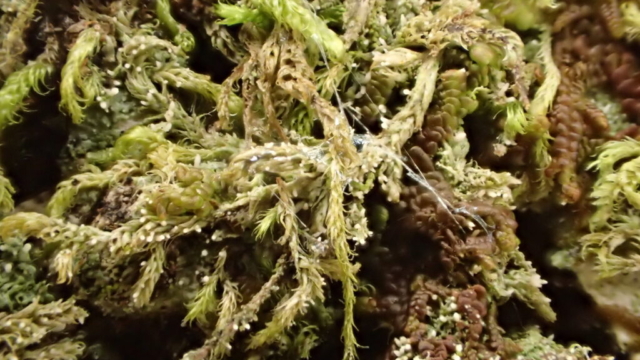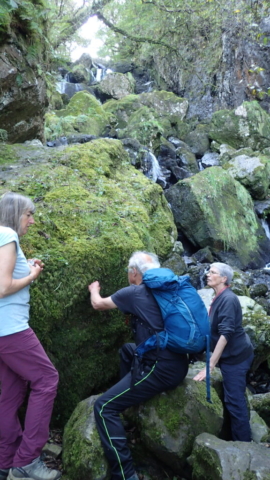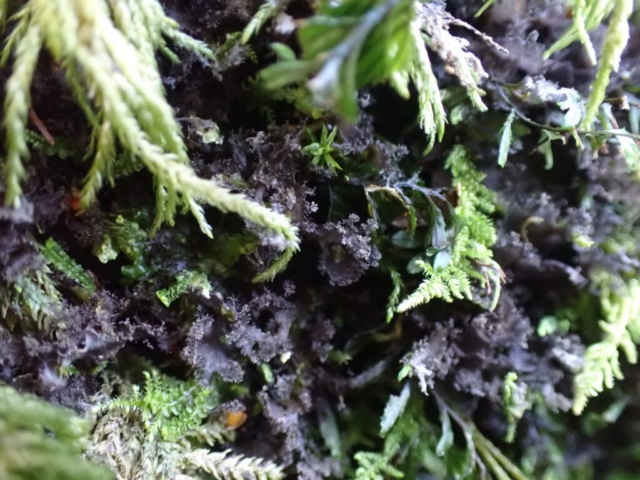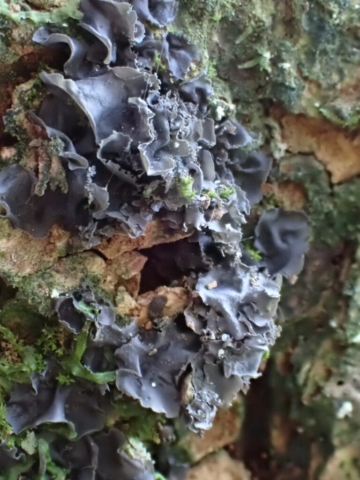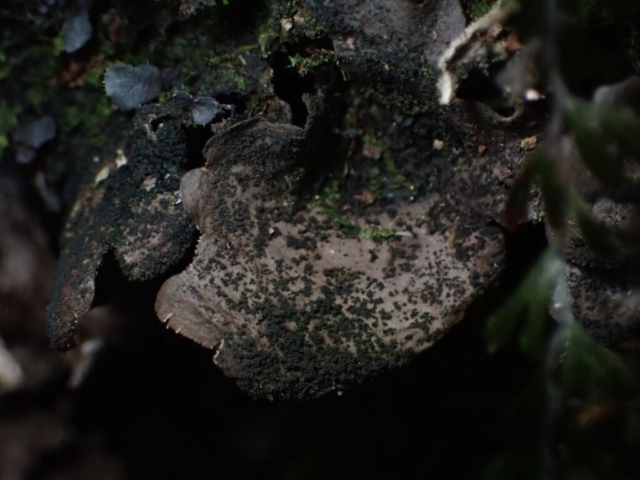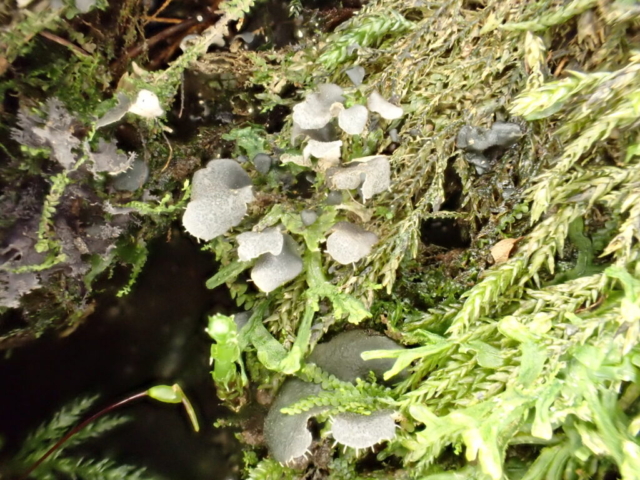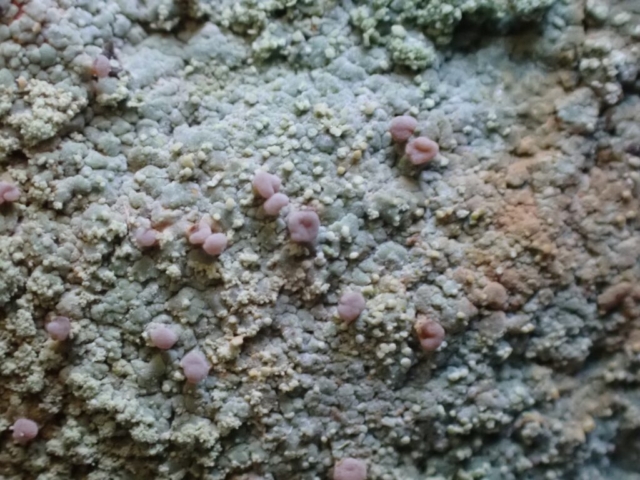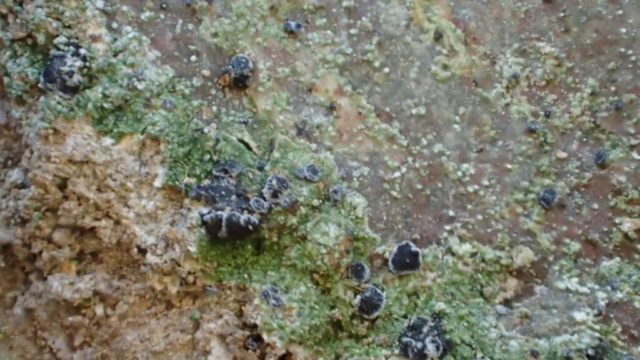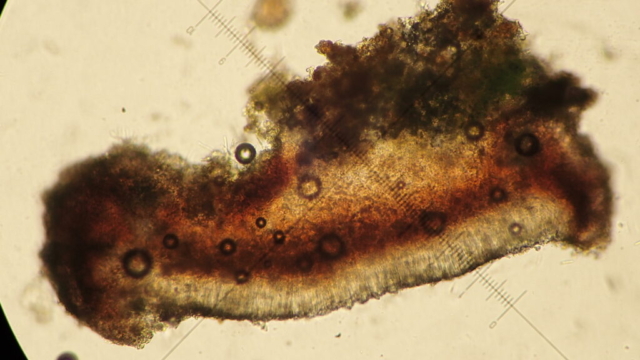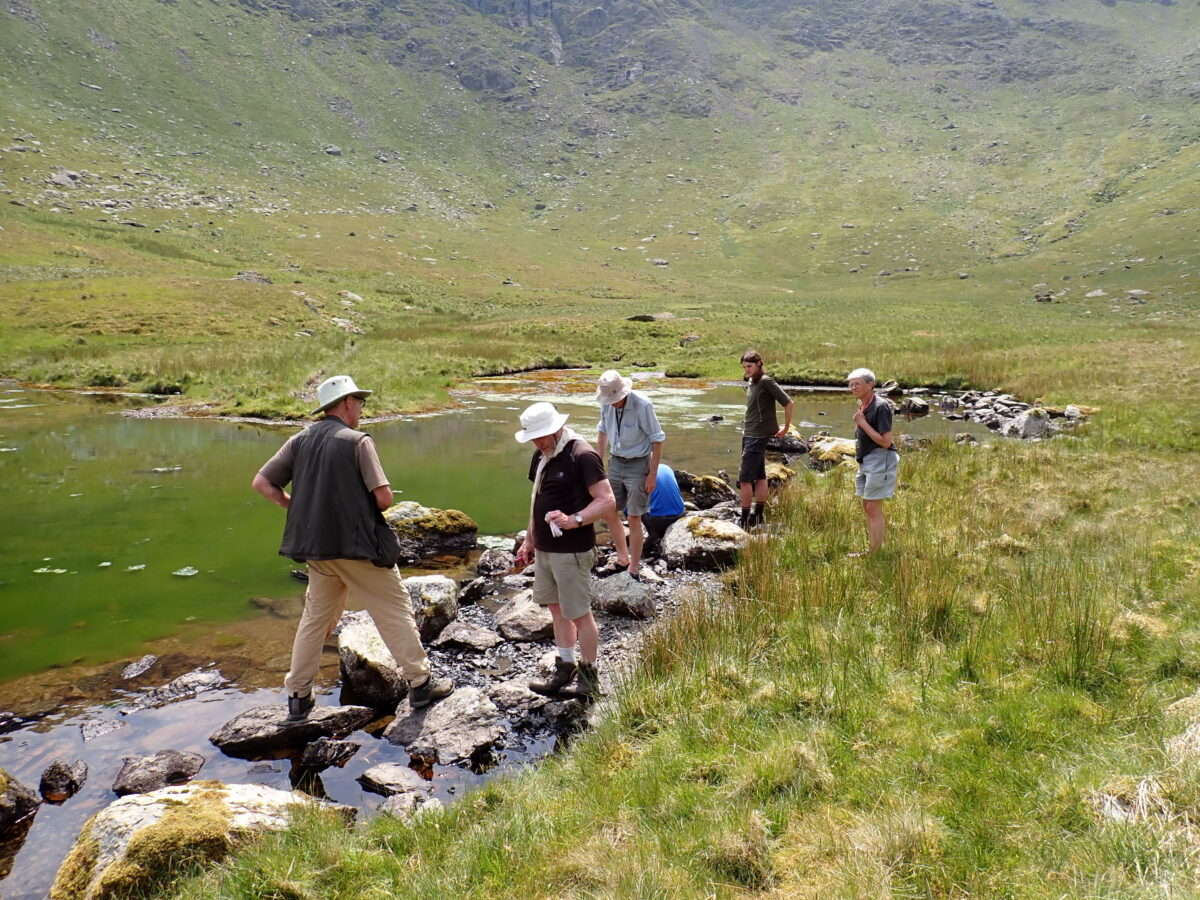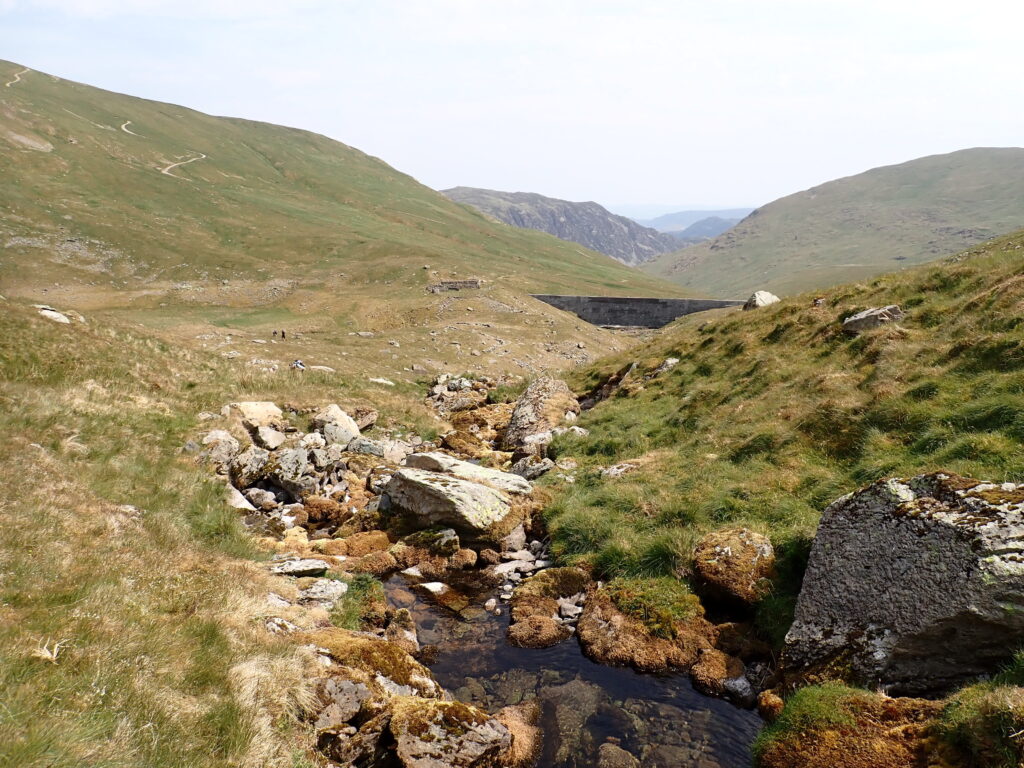Arriving early to avoid hold-ups from roadworks at Threlkeld we found the car park by Derwent Water almost empty. It quickly filled with lichenologists and bryologists all having had the same idea. Car parking for non-NT members is now restricted to 4 hours but luckily sufficient membership cards were produced (thanks, Pete) for us all to stay all day. There was still an early morning chill to the air but the clear blue sky presaged another dry, warm day to come, in this brief but welcome period of high-pressure.
First find of the day was down by the lakeside where Caz had seen a small inconspicuous piece of Sticta limbata on willow. Crossing the road from the car park our party of eight lichenologists followed rather more slowly in the steps of the bryologists who were more focussed on reaching the beck and falls behind the Lodore Hotel. There was plenty of interest along the path which wound along the base of the steep hillside through mainly sessile oak, elm and ash SSSI woods, where we found plenty of luxuriant Peltigera spp. on tree trunks and mossy boulders, various Pertusaria spp, Coniocarpon cinnabarinum, C. cuspidans (previously Arthonia elegans, one of the species that has changed both generic and specific names – annotate your Dobson!), Mycoblastus sanguinarius or bloody heart lichen and Normandina pulchella aptly given the common name, elf-ears. A highlight for me was Pete’s description of the orange, dark-rimmed apothecia on Pachyphiale carneola as iron-bru jelly sweets and his tip for remembering the latin name as ‘elephant flesh’ (it worked for me!). Graphis spp were much in evidence, G. pulverulenta and G. personii as well as G. scripta s.str. on hazel.
A bit further on, we crossed into the second monad of the day and began another list. Perhaps directed by a shaft of sunlight on a tree trunk, we found Parmotrema crinitum, which Pete memorably calls Desperate Dan because of its black whiskers. A few yards further on was our lunch-spot, the sunny viewpoint at the bottom of the Lodore falls from where we espied the bryologists picnicking in their natural habitat of shade, amongst the spray-splashed rocks in the streambed below us. It would have been easy to be lulled into a post-prandial nap by the soothing sound of the cascading water and the warm sunshine but instead we set off again, this time upwards, scrambling up a steep path over slippery scree and tree roots which led up high above the beck. Here we discovered some more, interesting specimens such as Pannaria conoplea, a diminutive foliose species on a horizontal but still living larch and a filamentous species on vertical rock probably Cystocoleus ebeneus. Wood ants were out and about, if you rested your hand on a larch it was soon discovered and discouraged. A large nest at the base of one of the larches on the slope was alive with ant activity.
By mid-afternoon we felt we’d gone as far as we wanted and retraced our steps downhill, catching tantalising glimpses of the placid lake waters which looked invitingly cool in the hot afternoon sun. Down at the falls where it was shaded and several degrees cooler, jelly lichens Scytinium lichenoides and Leptogium cyanescens were living amongst the moss. We recorded Sticta sylvatica but looking carefully at the photos, at least some of it was the much rarer S. ciliata. Tiny but exquisite mosaic-forming Enterographa hutchinsiae was colonising flat pebbles. When we eventually returned to our cars, the car park had emptied and a few hardy souls were swimming in the lake but none of our party were tempted in!
Microscopic study of small samples taken home brought up more surprises, see the discussions on our Facebook page. Toniopsis (Bacidia) inornata was found, also on a pebble, and the first record for England. A putative Bacidia had spores that were much too short and has been confirmed as Lecania chlorotiza which has ‘near threatened’ status, whilst what we thought might be Catinaria atropurpurea had spores that were much too long and could be Bacidia absistens.
Text: Liz and Peter Bisset
Photos: Peter Bisset, Chris Cant, Pete Martin, Paul Hanson, Caz Walker



